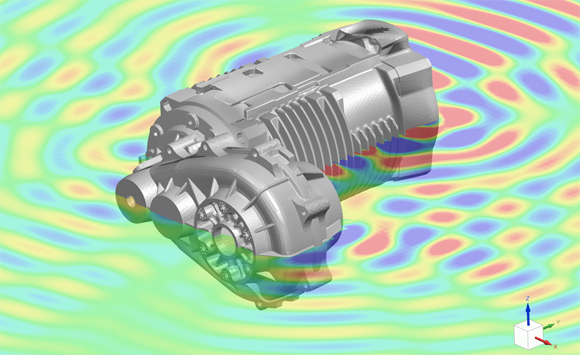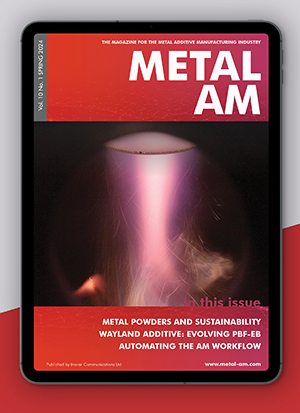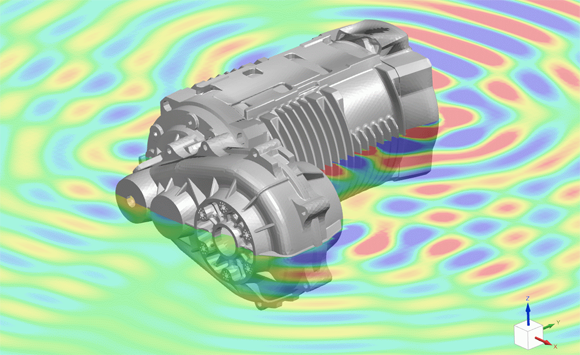Siemens expands simulation capabilities of Simcenter 3D
February 1, 2023

Siemens Digital Industries Software has expanded the capability of its Simcenter software, adding mechanical simulation to help streamline electrification engineering projects and assist new aircraft in meeting safety margins, whilst simplifying durability testing across many industries including Additive Manufacturing.
The company states that build process simulation is a must when dealing with metal-based Powder Bed Fusion (PBF) production methods, with the complex nature of these processes usually requiring the AM engineer to collaborate with an experienced CAE expert. The latest release of Siemens’ Simcenter software introduces a simplified application for simulation of the PBF build process, intended to be easy to use for engineers without extensive CAE experience. Using a voxel-based mesh in the background, the software can model and simulate the PBF build process, allowing engineers to understand whether a part can be built successfully. More detailed analysis can then be performed by CAE experts, also using Simcenter, thus enhancing collaboration.
“Addressing complex engineering challenges such as developing products that are more powerful, yet greener, lighter yet stronger requires a fully-integrated CAE solution,” stated Jean-Claude Ercolanelli, Senior VP Simulation and Test Solutions, Siemens Digital Industries Software. “The latest release of Simcenter offers a host of powerful enhancements to help engineers meet those challenges efficiently and significantly faster than ever before, whether that is getting tire contact simulations solved 45% quicker or reducing airframe structure preprocessing by up to 80%.”
The update brings a number of advantages to the automotive sector. As electrification within the automotive industry grows, the development of electric vehicle powertrains can be broken into silos for e-motor design, transmission analysis, NVH and acoustics. Siemens has stated that its mechanical simulation tools can help automakers break these silos by helping critical load, design and model information to move between these disciplines.
Beyond EV development, additional capabilities in this release are intended to improve simulation of other automotive applications from NVH, tyres and windshield wiper performance. The company has highlighted a new contract pattern display and updates to Simcenter’s Tire software.
For the aerospace industry, Simcenter’s capabilities are intended to reduce the number of models needed to simulate the behaviour of thin aircraft skins and perform margin of safety calculations quickly. The software may also help engineers better understand rocket launch dynamics by simulating the liquid sloshing in fuel tanks.
The Nastran software updates are intended to help airframe engineers with thin-skinned airframe structures that have different stiffness behaviour depending on the load case; tension (membrane) vs. compression (shear). Today, engineers typically create multiple models and properties to account for all the different loading conditions. The new tension-only-quad will change from membrane behaviour to shear behaviour automatically, so only a single model is needed to represent an airframe structure – reducing simulation preprocessing time by up to 80%.
In industrial machining, machine manufacturers may often lack the time or resources to physically test their machines to their limits. Simcenter offers new capabilities to help durability prediction without the need for specialist knowledge.
Simcenter 3D intends to overcome the need for separate toolsets and knowledge for proper durability by streamlining and automating strength analysis. The software is reputed to automatically calculate the parameters needed to adhere to the industry standard FKM guidelines. This means engineers can conduct durability analysis directly from stress analysis results.
The updates to Simcenter 3D are detailed here on YouTube and on a company blog post.
Download Metal AM magazine

















